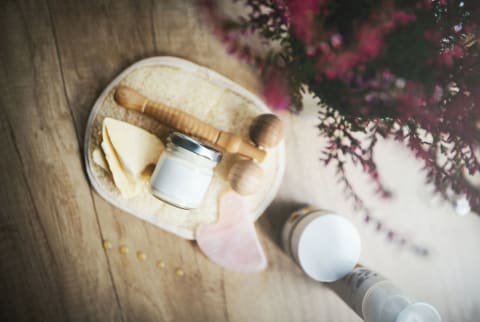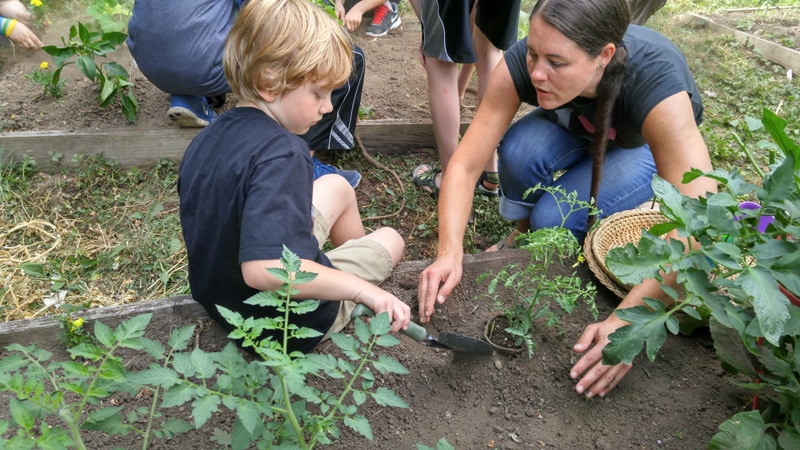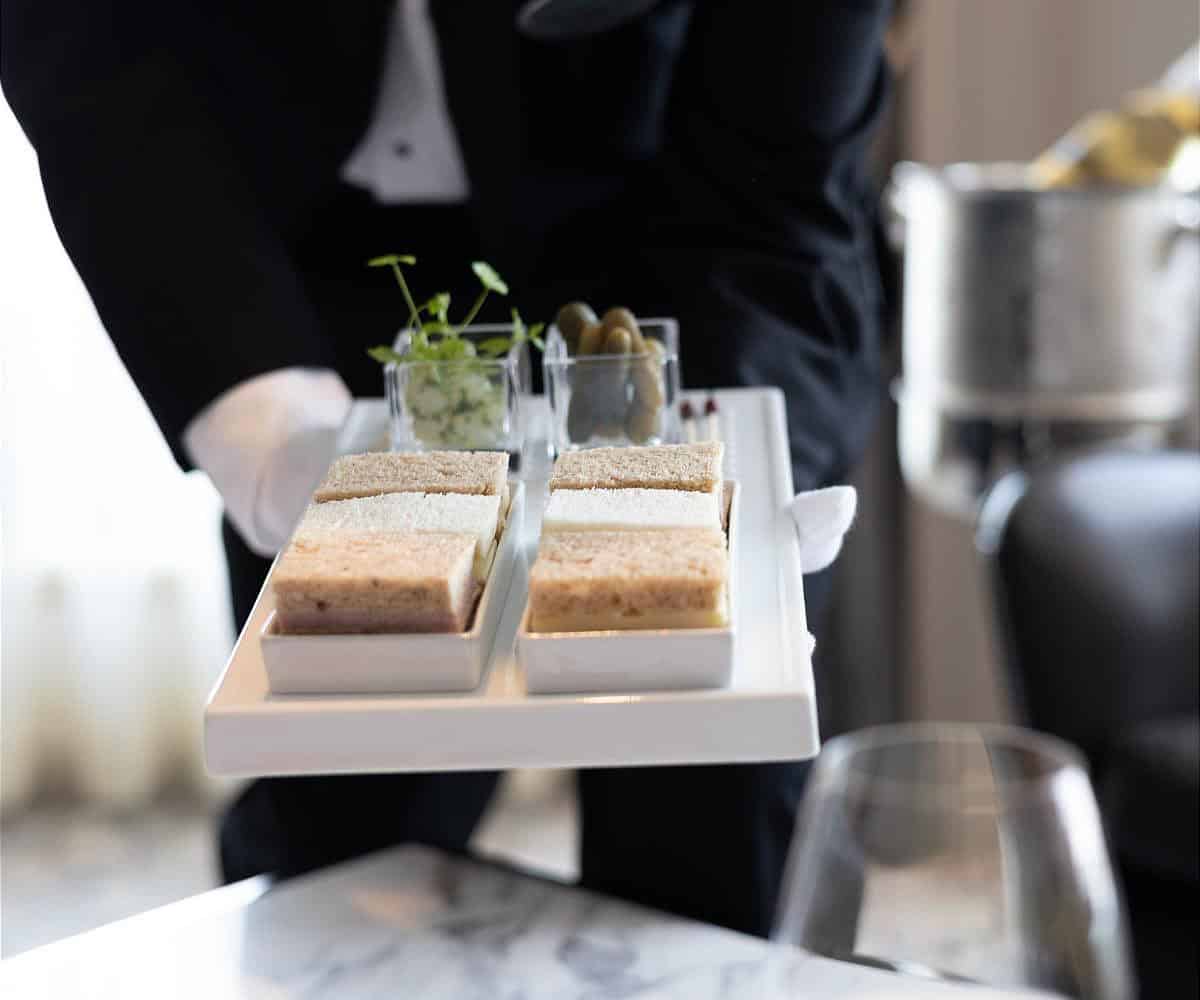3 Expert Tips For Perfecting Your Full-Body Gua Sha Technique
Your body deserves a little massage too.


Beauty & Health Editor
Beauty & Health Editor
Hannah Frye is the Beauty & Health Editor at mindbodygreen. She has a B.S. in journalism and a minor in women’s, gender, and queer studies from California Polytechnic State University, San Luis Obispo. Hannah has written across lifestyle sections including beauty, women’s health, mental health, sustainability, social media trends, and more. She previously worked for Almost 30, a top-rated health and wellness podcast. In her current role, Hannah reports on the latest beauty trends and innovations, women’s health research, brain health news, and plenty more.
Image by Aja Koska / iStock October 10, 2024 Every beauty professional has their non-negotiable steps. In our series, Like A Pro, we tap experts for the top three techniques they absolutely swear by. Here, you'll hear from a variety of industry insiders on the fail-safe tricks they always keep in their back pockets. We're all about simplifying your beauty regimen wherever you can, and sometimes the best routines are as easy as 1, 2, 3. Although facial gua sha is becoming more popular in the West, gua sha was originally used on the body, not the face. Considering it's an ancient healing modality in traditional Chinese medicine, this makes sense: This practice helps move chi around the body, which refers to heat—if that heat is not circulating throughout the body, it can lead to health problems, says skin care expert Debbie Kung, DAOM, LAc. Not to mention, research has shown full-body gua sha can balance the inflammatory response and immune system1 as well. And on the skin care front, experts say body gua sha can reduce inflammation, temporarily diminish the appearance of cellulite, and soothe muscles. All that being said: If you only gua sha your face, you could be missing out on some amazing benefits for your skin and overall health. Of course, a professional treatment with a licensed acupuncturist will be more targeted, as they understand the specific meridians that run along each region. However, on an episode of Clean Beauty School, Kung gave us all of her tips and tricks for a milder at-home practice. Finally, we should note that gua sha massage is not something you learn overnight—taking time to educate yourself on how to use the tool, the ancient wisdom behind the practice, and what works for you is well worth the wait. "Once you're comfortable using your tool, the sky's the limit with what you want to do," Kung says. So let's dive in: 1. If you've used a gua sha before, you probably know that it doesn't feel the best gliding over dry skin. Not to mention, constantly tugging at the skin can cause structural issues over time. That said, make sure you aptly moisturize the skin before you start, as this will promote an easy glide. Which product should you use, you ask? Well, it's ultimately up to your personal preference. In Eastern cultures, body oil is typically the go-to lubricant for the body and the face. If you want another cushion of moisture, you can start with a layer of lotion, then top it with oil prior to the gua sha practice. Just be sure to use a product that's hydrating and protects the skin barrier. Our go-to, of course, is the mbg postbiotic body lotion because it's packed with naturally derived, soothing hydrators, like oat oil, moringa seed oil, and coconut oil. What's more, this formula contains both pre- and postbiotics, which help to support the skin microbiome as well. It's dense and rich, yet it won't leave a sticky film on your skin when your gua sha routine is done. Bonus tip: Be sure to apply a little extra moisturizer to areas with thinner skin, especially the neck. 2. We repeat: Gua sha is not something you learn overnight. It is a very nuanced practice, and you should give yourself time to get it right. Of course, learning the basic techniques for using a gua sha on both the body and the face is important, but so is finding the right pressure for your own skin. That said, practicing your technique on your inner arm is a great way to figure out what intensity feels good for your skin, without tugging on thinner skin regions like the neck or face. Kung emphasizes "smooth, even-pressured strokes" and suggests gliding much softer on the face than you do on the body. Because the body has more muscle, you can go a little deeper if it feels right for you. 3. Says Kung: "You actually do want to see some redness…it's just a sign of blood flow getting to that area." So don't be alarmed if your skin starts getting rosy; it's likely just a sign that the gua sha massage is working. Especially because you can add slightly more pressure on the body, which may lead to more blood flow—and that's totally fine. Of course, the pressure should never be severely uncomfortable, but Kung says the reaction is common. 
Moisturize before massaging
Practice on your inner forearm to get the pressure right
You may see some redness—and that's OK
The takeaway
Gua sha was originally intended on the body for medicinal purposes in traditional Chinese medicine and has tons of benefits for the skin south of the jawline. This sort of massage is certainly not something you will pick up in a day or two, but there are a few things to keep in mind when you start your full-body gua sha practice.
Let's review: Remember to moisturize before massaging, practice your strokes to get the pressure right, and don't sound the alarm if you see (some) redness. And if you're still on the hunt for a go-to gua sha tool? We have tons of great options here.

 Konoly
Konoly -v1646695196476.jpg?1148x800)
































